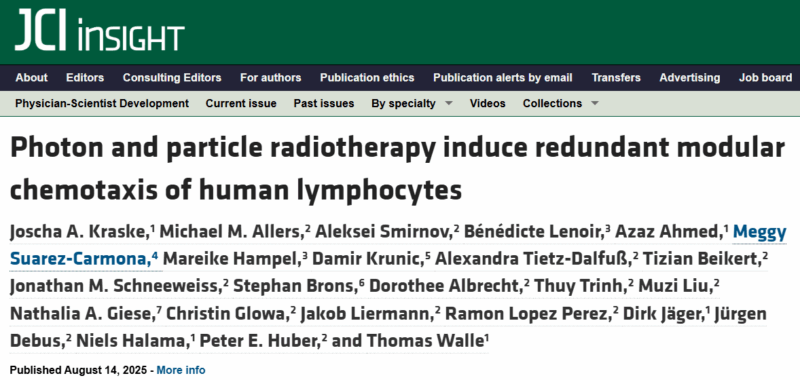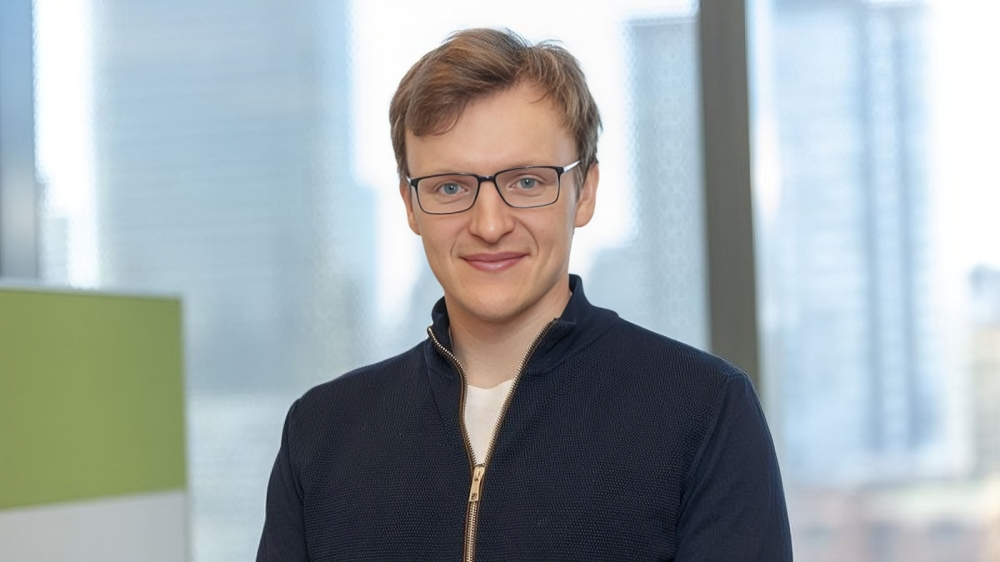Thomas Walle, Physician at the National Center for Tumor Diseases (NCT) Heidelberg, shared a post on LinkedIn about a paper he co-authored with colleagues published in JCI Insight:
“Radiotherapy immune signaling is modular, redundant, and has a limit.
Our new study in fully human systems shows that:
- Radiation triggers coordinated chemokine modules (SASP)
- Multiple chemokines in each module target the same immune cells
- Chemokine release is maxed out at clinically relevant dose ranges -> more does not help more
- A new explant model allows studying radiation-induced SASP in patient pancreatic cancer tissue.
Modular SASP: After irradiation, tumor cells release chemokines in defined ‘modules.’ Each module communicates with several receptors, which are expressed on the same immune cell types.
Redundancy: This overlap means several chemokines can recruit the same immune cell subsets. Blocking a single chemokine has a limited effect; multiple targets are needed to alter recruitment (inspired by work from Cassandra Burdziak, 10.1126/science.add5327)
Capped response: Chemokine release rises with dose, but only up to a plateau which is reached around 10 Gy photon biologically effective dose. Even high-LET carbon ions – more potent for killing cells – don’t surpass the ceiling in SASP output or chemotaxis.
Conserved mechanism: Photon, proton, and carbon ion irradiation all trigger similar chemokine modules and immune recruitment patterns, underscoring shared regulatory pathways.
New tools: Studying SASP in humans was possible because of our improved patient-derived pancreatic tumor explant model – fresh tumor slices kept alive ex vivo and irradiated under controlled conditions. This build on models pioneered by Niels Halama and preserves real tumor architecture and cell–cell interactions, letting us study SASP in a setting far closer to the patient’s tumor than cell culture.
What does this mean?
- Radiotherapy-immune crosstalk is robust but inherently limited
- Immune modulation will require targeting sets of chemokines
- Dose escalation alone can’t push beyond the biological ceiling
Understanding these concepts is key to better radio-immunotherapy design.
This project was with my mentor, turned research buddy, Peter Huber, led by brilliant physician-scientist Joscha Kraske.
Would not have been possible without our friends and collaborators Niels Halama, Jürgen Debus, Dirk Jäger, Ramon Lopez Perez, Jakob Liermann, Christin Glowa, Nathalia Giese, Muzi Liu, Michael Martin Allers, Aleksei Smirnov, Bénédicte Lenoir, Azaz Ahmed, Meggy Suarez-Carmona, Mareike Hampel, Damir Krunic, Alexandra Tietz, Tizian Beikert, Jonathan Schneeweiss, Stephan Brons, Dorothee Albrecht, Thuy Trinh.”
Title: Photon and particle radiotherapy induce redundant modular chemotaxis of human lymphocytes
Authors: Joscha A. Kraske, Michael M. Allers, Aleksei Smirnov, Bénédicte Lenoir, Azaz Ahmed, Meggy Suarez-Carmona, Mareike Hampel, Damir Krunic, Alexandra Tietz-Dalfuß, Tizian Beikert, Jonathan M. Schneeweiss, Stephan Brons, Dorothee Albrecht, Thuy Trinh, Muzi Liu, Nathalia A. Giese, Christin Glowa, Jakob Liermann, Ramon Lopez Perez, Dirk Jäger, Jürgen Debus, Niels Halama, Peter E. Huber, Thomas Walle
You can read the Full Article on JCI Insight.

You can find more posts about Radiotherapy on OncoDaily.
